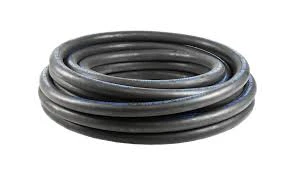sae j2064 type e
Understanding SAE J2064 Type E A Deep Dive into Automotive Refrigerant Hoses
In the automotive industry, efficient and reliable systems are crucial to vehicle performance and climate control. One key component in maintaining an effective air conditioning system is the refrigerant hose. Among the many standards that govern these essential parts, the Society of Automotive Engineers (SAE) J2064 Type E specification stands out. This standard outlines the requirements for the design, production, and testing of automotive refrigerant hoses that are compatible with both high-pressure and low-pressure refrigerants.
What is SAE J2064 Type E?
SAE J2064 is a comprehensive standard covering the specifications for rubber refrigerant hoses used in automotive air conditioning systems. Type E specifically refers to a category of hoses designed for specific refrigerant applications, including those utilizing hydrofluorocarbons (HFCs) like R-134a and R-1234yf, which have become more prevalent due to environmental regulations. This classification addresses the hose's compatibility with these modern refrigerants, ensuring that the hoses do not degrade or fail under operational stresses.
Key Requirements
The SAE J2064 Type E specification encompasses various crucial factors that hoses must meet
1. Material Durability Type E hoses are constructed from materials that resist degradation, including synthetic rubber and reinforcement layers that can withstand temperature fluctuations and pressure variations. This durability is crucial to maintaining an airtight seal over time.
2. Temperature Range The hoses must function effectively across a broad temperature range, typically from -40°F to 250°F (-40°C to 121°C). This ensures that they can operate efficiently under various environmental conditions and vehicle operational states.
sae j2064 type e

3. Pressure Rating Type E hoses are required to sustain high-pressure levels that can reach up to 300 psi or more. The strength and design of these hoses minimize the risk of leaks or ruptures, which are critical to ensuring the efficiency of the automotive air conditioning system.
4. Flexibility and Handling Even under the stress of high temperatures and pressures, the hoses must remain flexible for ease of installation and maintenance. This flexibility is vital for fitting hoses into the tight confines of modern engine compartments.
Testing and Compliance
To ensure that they meet these rigorous standards, Type E hoses undergo a series of tests. These include hydrostatic testing, which assesses the hoses' ability to withstand high pressure, and aging tests that simulate long-term exposure to environmental factors. Additionally, permeation tests measure the rate at which refrigerants might leak through the hose materials, ensuring compliance with environmental regulations concerning refrigerant loss.
The Importance of Compliance
Adhering to the SAE J2064 Type E standard is not merely a matter of industry best practices; it is a legal requirement in many regions. Non-compliance can lead to failures that could not only compromise vehicle performance but also pose safety hazards and environmental risks. As the automotive industry shifts towards more sustainable practices, the role of compliant and reliable components like Type E hoses becomes increasingly vital.
Conclusion
The SAE J2064 Type E specification represents a critical benchmark in the automotive industry's efforts to enhance air conditioning reliability and efficiency. By outlining stringent requirements for material durability, pressure management, and environmental performance, the standard ensures that automotive refrigerant hoses can meet the demands of modern vehicles while adhering to regulatory standards. As technology continues to advance and new refrigerants emerge, these standards will play an essential role in guiding the future development of efficient and environmentally friendly automotive systems.
-
Ultimate Spiral Protection for Hoses & CablesNewsJun.26,2025
-
The Ultimate Quick-Connect Solutions for Every NeedNewsJun.26,2025
-
SAE J1401 Brake Hose: Reliable Choice for Safe BrakingNewsJun.26,2025
-
Reliable J2064 A/C Hoses for Real-World Cooling NeedsNewsJun.26,2025
-
Heavy-Duty Sewer Jetting Hoses Built to LastNewsJun.26,2025
-
Fix Power Steering Tube Leaks Fast – Durable & Affordable SolutionNewsJun.26,2025

